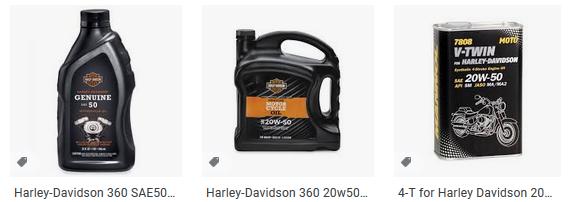What type of Harley-Davidson oil should I use? If you plan on keeping your bike for many years and thousands of miles, it will likely hold up much better if you use high-quality motorcycle lubricants.
With the exception of the V-Rod, your Harley has an air cooled engine that does not run as cool as a liquid cooled engine. If you add a passenger and or luggage, your putting more demand on your engine. Motorcycles put different demands on oil and need to be specifically formulated for motorcycle use. Motorcycles tend to sit idle for weeks or even months, especially here in the great white north. Quality motorcycle oil has rust and corrosion inhibitors like zinc and sulfur which help protect your engine.
Here’s a look at what’s added to high-grade motorcycle oil:
ANTIWEAR AGENTS
To better protect motorcycle engines, motorcycle oils use zinc, which is an antiwear and antioxidant, in higher concentrations. Plain-bearing engines need phosphorus which is an important antiwear ingredigent.
DETERGENTS AND DISPERSANTS
Detergents and dispersants help dissolve sludge and keep particles in suspension to be trapped by the oil filter.
ANTIFOAM AGENTS
Silicone-based antifoam agents reduce surface tension to prevent bubbles from forming. The bubbles are full of air, which does not lubricate. The engines cooling system can’t move the oil effectively when it foams.
ANTIACIDS
Antiacids are added to help prevent acids that are formed when condensed moisture reacts with combustion contaminants.
Here’s a look at synthetic and regular petroleum oils
without going into all that technical stuff:

SYNTHETIC OIL
Synthetic oils have been synthesized or formed from other components. They’re made from either poly alpha olefins or from esters, such as vegetable oils or other natural sources. Both are formulated in laboratories. This process causes synthetics to be more stable at high heat. This makes synthetic a good choice for Harley-Davidson oil. Harley’s Syn 3 synthetic can also be used in the primary. See our harley-davidson oil chart.
PETROLEUM OIL
Petroleum based oils begin to break down chemically and lose their lubricating qualities at around 220 degrees. Synthetics maintain their qualities beyond 300 degrees. These days, many motorcycles have their fuel mixtures set very lean to meet emission standards, which makes them run very hot. This heat can cause petroleum based oil to break down.
MIXING SYNTHETIC AND PETROLEUM
In an emergency, you can mix petroleum based oil with synthetic oil if they are the same viscosity. In a chemical sense, the two oils should be compatible, but you’ll be lowering the the quality of the synthetic.
HOW OFTEN SHOULD OIL BE CHANGED
Oil change intervals are specified by the manufacturer, but how you run your bike should determine how often your Harley-Davidson oil is changed. A rider who uses petroleum based oil and rides in hot weather or rides in stop-and-go traffic should change their oil more often. Someone who rides a liquid cooled V-Rod and uses synthetic oil could go longer between changes.
MULTI-VISCOSITY OIL
A lot of high quality oils use mutli viscosities. Using a 5W-30 for example, the W means the oil can be used for lower temperatures or winter temperatures. This oil would flow like a 5 weight oil at 0 degrees Fahrenheit and thicken to 30 weight at higher temperatures. The viscosity change is caused by polymers that shrink when cold for easier starting, then thicken at operating temperatures.





